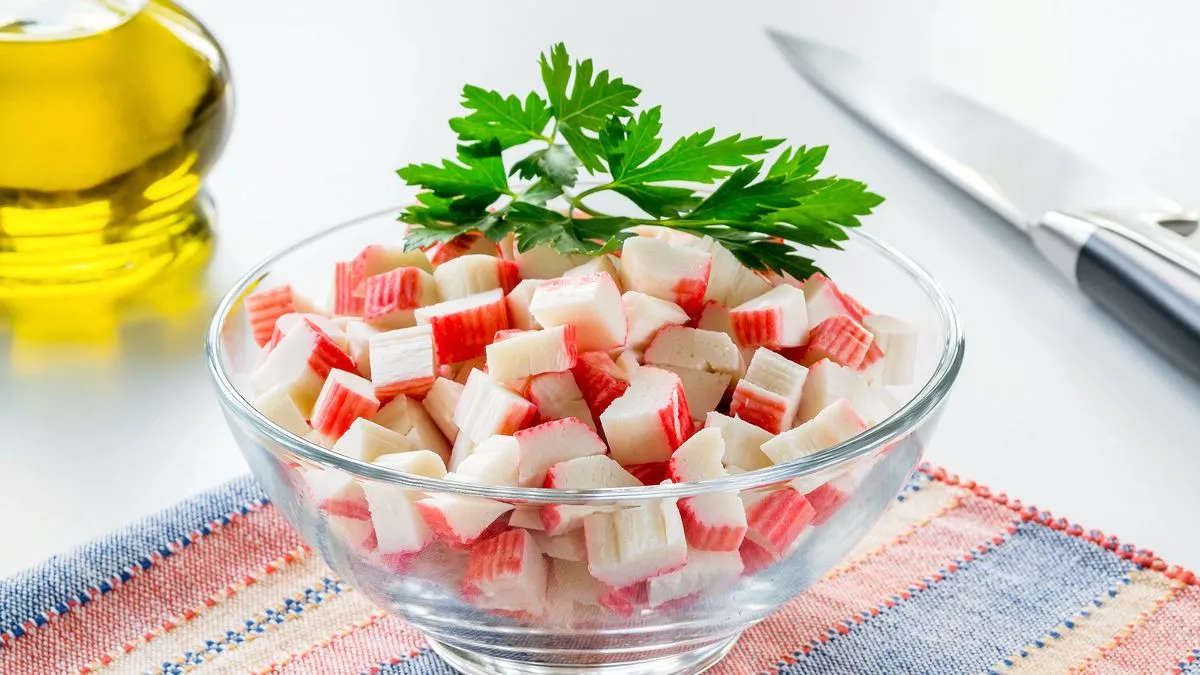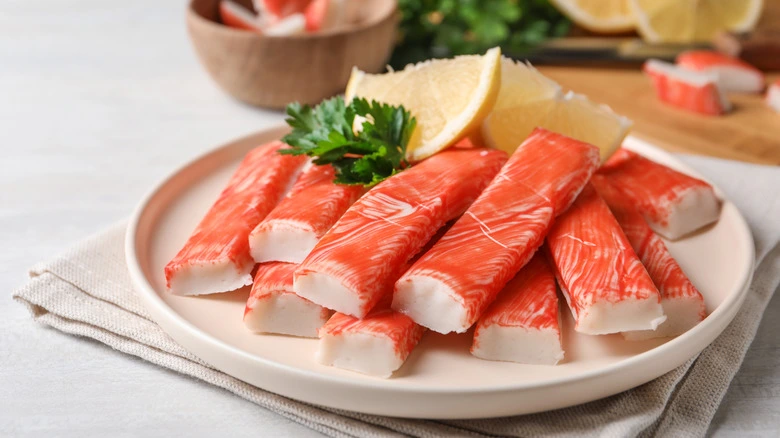If you’re someone who loves seafood but wants a more affordable option, you might have come across imitation crab. This article will delve into the world of imitation crab, discussing what it is, its nutritional content, potential benefits, downsides, and more. So, let’s dive right in and explore the ins and outs of imitation crab nutrition.
What Is Imitation Crab?
Imitation crab, also known as surimi, is a seafood product that’s designed to mimic the taste and texture of real crab meat. However, it’s important to note that imitation crab is not actually made from whole crab meat. Instead, it’s created using a mixture of fish, usually white fish like pollock or haddock, combined with various additives and flavorings to give it that crab-like taste.
Nutritionally Inferior to Real Crab
When it comes to nutrition, imitation crab falls short compared to real crab meat. Real crab is rich in protein and essential nutrients, whereas imitation crab is often lower in protein and lacks some of the natural vitamins and minerals found in genuine seafood.
Nutritional Comparison
| Nutrient | Real Crab (3 oz) | Imitation Crab (3 oz) |
|---|---|---|
| Protein | 18g | 6g |
| Vitamin B12 | 9.8mcg | 0.6mcg |
| Selenium | 41mcg | 15mcg |
| Omega-3 Fatty Acids | 350mg | 100mg |
Made from Many Ingredients
Imitation crab is crafted using a blend of processed fish, starches, and other ingredients. Some variations also contain colorings, preservatives, and additives to enhance flavor and appearance. This complex ingredient list might not appeal to those seeking a simple and natural seafood option.
Potential Upsides
However, there are a few potential upsides to choosing imitation crab. It tends to be more affordable than real crab, making it accessible for budget-conscious consumers. Additionally, it’s pre-cooked and ready to eat, saving you time in the kitchen.
Potential Downsides
1. Environmental Impact
The production of imitation crab can have an environmental impact due to overfishing of the species used for the surimi base. This can disrupt marine ecosystems and affect other marine life.
2. Mislabeling, Food Safety, and Food Allergies
There have been concerns about the mislabeling of imitation crab products, which can lead to confusion for consumers with allergies or dietary restrictions. Additionally, some versions might contain allergens like wheat or shellfish, posing a risk to those with allergies.
Simple to Use
Imitation crab comes in various forms, making it versatile for different dishes.
1. Flake-style or Chunks:
Flake-style imitation crab can be easily incorporated into salads, pasta, and sushi rolls, adding a touch of seafood flavor and texture.
2. Sticks:
Imitation crab sticks are popular as a quick snack or appetizer. They can also be used in sandwiches and wraps.
3. Shredded:
Shredded imitation crab is ideal for dips, spreads, and casseroles, providing a crab-like essence to your recipes.
The Bottom Line
In conclusion, imitation crab can be a convenient and budget-friendly way to enjoy a seafood-like experience. However, it’s important to recognize that it falls short in terms of nutritional content compared to real crab. Consider incorporating it into your diet with an awareness of its ingredients and potential drawbacks.
FAQs
1. Is imitation crab safe for people with seafood allergies?
While imitation crab might not contain actual crab, it often includes fish and other allergens. People with seafood allergies should read labels carefully and consult their healthcare provider before consuming it.
2. Can imitation crab be a good source of protein?
Imitation crab does contain protein, but the protein content is lower compared to real crab. If you’re seeking a high-protein option, real crab is a better choice.
3. Are there any environmental concerns associated with imitation crab production?
Yes, the production of imitation crabs can contribute to overfishing and environmental disruptions. It’s important to choose seafood options that are sourced sustainably.
4. Can I use imitation crab in cooked dishes?
Absolutely, imitation crab can be used in a variety of cooked dishes, including pasta, casseroles, and stir-fries.
5. Does imitation crab taste like real crab?
Imitation crab is designed to mimic the taste of real crab, but the flavor might not be identical. It’s a matter of personal preference whether you enjoy its taste.






